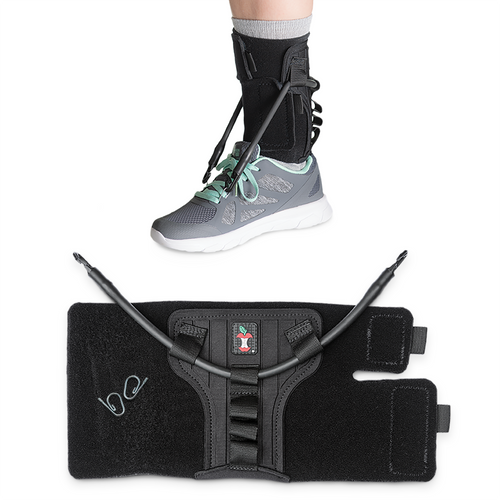

6 Common Causes of Foot Cramps
Lisa Williams
Foot cramps are an involuntary spasm of the muscles in your feet, most often affecting the arch or the toes. They occur when a muscle in your foot contracts and is temporarily unable to relax. While foot cramps usually don’t last long, they can recur and are often intensely painful.
Many people also experience Charley horses, which are sudden, sharp cramps that happen in the foot, calf, or thigh. These painful spasms can occur during exercise or even while you’re resting at night. Learn more about Charley horses here.
If you experience foot cramps on a regular basis, there may be an underlying cause worth addressing. Here are six of the most common reasons you might be dealing with foot cramps.
- Overly Intense Exercise
Your foot muscles constantly contract and expand to enable normal movement and exercise. If you overwork them – through running, dancing, or standing too long, they may fatigue and spasm. This type of overexertion often leads to painful cramps, especially in those who put repeated stress on their feet.
People with ankle instability often overwork the muscles in the feet and lower legs, as these muscles must work harder to stabilize each step. Using ankle braces, such as the Inner Lok 8®, or wearing supportive footwear can provide extra stability, reduce strain, and help prevent cramping.
Give your feet regular rest and use supportive gear when necessary to help reduce foot cramping.
- Lack of Physical Activity
On the opposite end of the spectrum, a lack of exercise and physical activity can also lead to foot cramps. Sitting and prolonged periods of inactivity, restricting blood flow, can make your muscles more susceptible to cramping. Poor posture, especially when sitting, can make this even worse.
In addition to regular movement, applying heat therapy (like a warm compress or heating pad) can help relax tight muscles and improve circulation after periods of inactivity. Alternatively, cold therapy can reduce inflammation if your cramps are accompanied by soreness.
Make sure to get consistent exercise and avoid lengthy periods of inactivity to keep your foot muscles healthy.
- Poorly Fitting Shoes
Tight or ill-fitting shoes - especially styles that squeeze the toes, such as high heels - can restrict muscle movement and circulation, leading to cramps. Choosing footwear that provides proper support and allows natural movement is one of the simplest ways to reduce the frequency of cramps.
If cramps do occur from shoe-related strain, alternating warm soaks and cold packs can bring quick relief while you work on improving your footwear choices. (But definitely save the high heels for special occasions!)
- Nutrient Deficiencies
Certain vitamin and nutrient deficiencies leave your muscles vulnerable to cramping, especially low levels of calcium, potassium, and magnesium. Eating a varied diet of healthy foods, including plenty of fruits and vegetables, will help your body and muscles get the proper nutrients. In some cases, supplements may be needed to restore vitamin or nutritional balances.
- Medications
Muscle cramps are a known side effect of several common medications, including some prescribed for cholesterol, blood pressure, and asthma. Check any medications or ask your doctor if they could be contributing to your foot cramps.
- Medical Conditions
In some cases, recurring cramps can signal an underlying medical condition. Disorders such as multiple sclerosis, peripheral artery disease, or diabetic neuropathy may cause chronic cramping.
Another related issue is foot drop, a condition where weakness or nerve damage causes difficulty lifting the front part of the foot. Foot drop not only alters walking patterns but also puts added strain on the foot and lower leg muscles, sometimes leading to increased cramping. It is often linked to neurological disorders or nerve injury and should be evaluated by a healthcare professional.
Self-care tip: People with foot drop may benefit from ankle-foot orthoses (AFOs) like the FootFlexor®, a supportive brace that helps lift and stabilize the foot. Gentle stretching and strengthening exercises, under the guidance of a physical therapist, can also help reduce cramping and improve mobility.
While these conditions are less common, you should consult a physician if your cramps are frequent, severely painful, or they don’t go away.
Final Thoughts
Occasional foot cramps are usually harmless, but persistent or severe cramps deserve closer attention. Whether caused by overexertion, inactivity, shoes, diet, medication, or an underlying condition, identifying the root cause is key to lasting relief.
By making small lifestyle changes and seeking professional advice when needed, you can help keep your feet cramp-free and moving comfortably.
Mentioned Products

FootFlexor Ankle Foot Orthosis

Swede-O Inner Lok 8 Ankle Brace

Vinyl CorPak Intense Cold Pack



